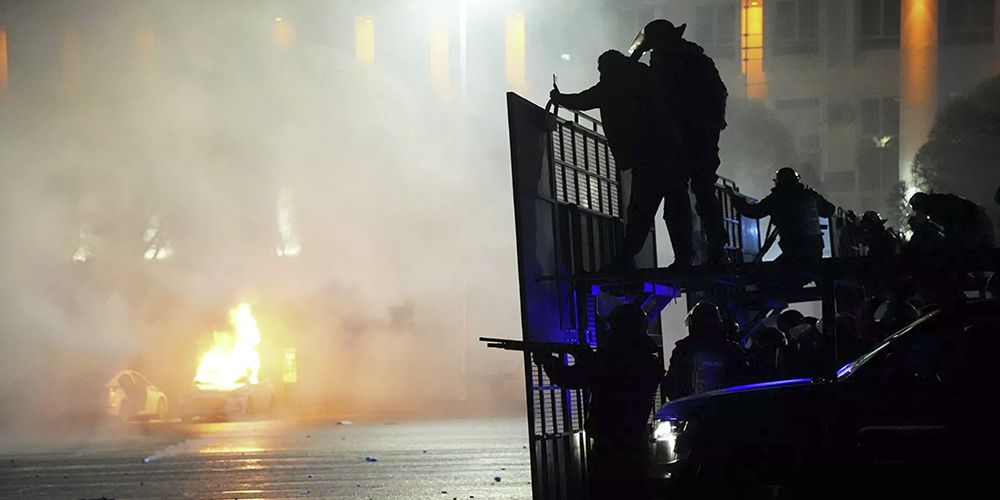Search

Publications
Counteraction to color revolutions in the context of security interests of the Caspian and Central Asian states

The decision about Russian special military operation in Ukraine predetermined the transition to the next phase of the global standoff, when under the pressure on behalf of the «collective West» Moscow was forced to undertake extraordinary measures to assure its own security. It should be remembered that prior to the events of 24 February 2022 the USA and NATO refused from discussing the proposals of Russian leadership about security guarantees; there was also an attempt of armed rebellion in Kazakhstan, where the limited peace-making forces of CSTO had to be used for the first time in the history of this Treaty Organization.
It should be noted, that at the current stage in addition to Ukraine, which the West is trying to use against Russia as «the second Afghanistan», the countries of the Caspian region – both the Caucasus and Central Asia – remain the potential sources of geopolitical tension. In the context of the so-called «the New Great Game» and the analysis of the US strategic doctrine, Central Asia appears to be the most probable region for opening «the second front» against Russia, which remains possible despite of the American troops’ withdrawal from Afghanistan. [1]
In our opinion, to implement their own geopolitical objectives the Anglo-Saxons and their satellites will be using their favorite method of color revolution in Central Asia. For that they will need to use the aggregate of internal problems of the ruling regimes, the Nationalistic Islamism factors, the practices of intelligence penetration into the ruling circles creating extensive networks of influence including numerous «independent» media and NGOs.
Turmoil in Karakalpakstan and external factors
The turmoil in the Republic of Karakalpakstan, the autonomous region of Uzbekistan, in early July 2022 appeared to be another serious warning after the Kazakhstan event early this year. It should be emphasized that to stabilize the situation Shavkat Mirziyoyev, the President of Uzbekistan, issued a special decree declaring the emergency rule in the territory of the region for the period from July 3 to August 2, and more than 20 persons were killed in the clashes between the protesters and the police. 141 representatives of law enforcement agencies received bodily injuries of various degrees of severity while performing their duties, and 516 people were detained for committing crime and offense against the state order. [2]
It should be acknowledged that as of now there are no conclusive proofs of external influence to instigate the turmoil in Karakalpakstan, even though Shavkat Mirziyoyev at his meeting with the citizens of Nukus (the capital of Karakalpakstan) stated that the protesters were controlled from outside and were dancing to someone else’s tune. At the same time, the commonly recognized version is that the main cause of the events includes managerial mistakes of Uzbekistan authorities, which made a poor judgement in the course of the Constitution reform – to abolish the autonomous status of the Karakalpak region. Shavkat Mirziyoyev cancelled this decision after he personally visited the turmoil venue; however, the protest was already ramping up and eventually resulted in adverse consequences in the form of fatalities.
Nevertheless, analyzing the past events we cannot ignore the fact, that at the stage of suppressing the unrest the Uzbekistan authorities represented by Khamijon Dadavayev, deputy commander-in-chief of the National Guard, declared that there were «foreign citizens» among the detainees. However, because of the investigative secret details about this were not disclosed. [3] In this context, it also should be noted that the «oppression of the Kara-Kalpaks» topic is traditional for regional branches of various human rights advocacy groups funded by the USA State Department, the Open Society George Soros’ Foundation and other government and non-government organizations of the «collective West».
In the context of the events described in this article, it is important to emphasize that Marie Struthers, the Director for Eastern Europe and Central Asia of the international human rights NGO Amnesty International, as early as on 4 July 2022 demanded from Uzbekistan authorities «to stop the unlawful use of force against the protesters in Karakalpakstan and investigate the human rights’ breaches». [4] We should remember that Amnesty International was founded in 1961 in Great Britain, and its funding sources include the US State Department, the European Commission, and a number of other Western government agencies.
The experience of Belarus
There was another common aspect important for evaluating the events in Uzbekistan and Kazakhstan: using the forms and methods of mobilizing and coordinating the protesters similar to the civil disobedience action in the Republic of Belarus after the presidential elections in August and in the fall of 2020.
In particular, Telegram channels and other virtual web communities were actively used playing the role of «collective propagandists and organizers»; the protest looked decentralized and did not have obvious leaders, however, the so-called supervisors were noticeable in the crowd – people having the respective lists and funds. In Nukus, the instigators and active organizers of the turmoil were dressed in red T-shirts according to the guidelines by Gene Sharp, the American political strategist, (in Belarus at the «non-violence resistance» stage white clothes items were actively used). [5]
Moreover, the extremist Telegram channels, which used to coordinate the protest in Belarus, started their coverage of turmoil first in Kazakhstan, and then in Nukus advocating for the protesters; during the events in Kazakhstan, the Belarus resources based in Poland were openly providing information support to the anti-government actionists.
With that in mind, we need to emphasize that the Republic of Belarus during its sovereignty period is permanently encountering the attempts to overthrow its constitutional government; such attempts are organized by the collective West using the color revolution technology. In the opinion of the State Secretariat of Belarus Security Council, «starting from 1994, not a single meaningful election campaign did not go without external interference. The contemporary history of our country remembers at least six color revolution attempts». [6]
The seventh and the most massive attempt to overthrow the government (from the standpoint of thorough planning, external impact, funding and engagement of masses) took place in August 2020 after the presidential elections. Various methods were used to organize the coup-d’état, starting from civil unrest and the follow-up «non-violence resistance» and finishing with the attempt to organize strikes, the conspiracy aimed at assassination of the head of the state and a number of top-ranking officials, underground sabotage activities at the industrial enterprises and transport infrastructure sites, terrorists attacks against the law enforcement officers, government officials and patriotic politicians, journalists and public activists. On top of that, the collective West imposed the unparalleled economic sanctions against Belarus, closed the air area and restricted its access to a number of seaports.
The security services of Belarus investigated the 2020 events and found that the political bosses of the United States (coordinated by Michael Carpenter, the aid to Jo Biden, the USA President) organized the plot to overthrow the lawful Belarus leadership, the neighboring countries (Poland, Lithuania and Ukraine) were the key contractors, and the actual performers were from the extensive influence network of NGO, «independent» media, bloggers, «experts» traitors among the government officials and political entities – all of this created under the guise of the «dialogue» of Minsk with the EU and the USA during the recent 10 years. [7]
Assessing the authorities’ measures on subjection of the rebels, we need to state that they quite skillfully maneuvered from the criminally oppressing practices with respect of persistent offenders to public dialogue with the law-abiding citizens, the so-called «strayed», engaged into the anti-government activities due to their personal circumstances or those having quire fair reasons for being dissatisfied with the government. In particular, simultaneously with the prosecution of the instigators and active participants of the mass unrest (currently about 1200 persons are sentenced for such crimes of various degree of severity), the President of Belarus facilitated the Constitution reform, during which over 3,000 public discussions were organized at special platforms engaging 150-200 thousand people.
After the events of August 2020, the law enforcement agencies of Belarus started the systematic clearances of the public, political and information spheres from the destructive elements performing as the main organizers of destabilizing the domestic political situation. In particular, 56 «public organizations» and more than 300 media entities having legal and hidden foreign financing were eliminated.
According to the new law, numerous «blogs», «residential chats» and Telegram channels created for propaganda and protests coordination were recognized extremist, and the subscription to such resources and the dissemination of their materials were criminalized. It should be emphasized that the sanation of the domestic political landscape in Belarus is still going on, and the amended Constitution now contains the norm prohibiting foreign funding of electoral campaigns.
All the above-described measures combining the law enforcement and political elements brought certain positive results. Starting from early 2021, no protests were registered in Belarus, and the domestic political situation is characterized as stable and well-controlled; the authorities were successful in the mass-scale campaign for amending the Constitution and the resulting referendum on 27 February 2022.
Conclusion
Summarizing the above, it is worth emphasizing that Belarus has accumulated invaluable experience of counteracting color revolutions including the lessons learned from the mistakes in foreign and domestic politics, which facilitated the creation of the «entry points» into the national government system for the security services of unfriendly countries. In our opinion, in the circumstance of geopolitical standoff it is extremely important for smaller and medium-size countries not to give in to the «multi-vector policy» temptation, having in mind that the «collective West» practices are targeted at promoting the value-based subjection techniques under the guise of the joint economic projects, at creating and developing the networks of influence capable of performing as the color revolutions triggers when needed.
In this context, it should be remembered that as early as 10 January 2022, i.e., 6 months prior to the events in Nukus, Alexander Lukashenko warned Tashkent about the destabilization risk for Uzbekistan at the session of the CSTO Collective Security Council. The forecast of the Belarus leader was based on «the lessons we need to learn from the turmoil in Kazakhstan», where the «internal factors» coincided with «the intent of numerous stakeholders to explode the situation in Central Asian republics». [8]
In our opinion, the Central Asian countries, especially Kazakhstan and Uzbekistan, have their own analytical and enforcement capabilities allowing for efficient response to the risks, challenges and threats for their national security. At the same time, it looks that the experience of Belarus in this sphere together with enhanced interaction between the respective government agencies and non-government patriotic «think tanks» in CSTO and CIS will facilitate stable development of the republics in the Central Asian region.
The activities of Amnesty International are designated «undesirable» in the territory of the Russian Federation
1. Kleveman, Lutz. The New Great Game: Blood and Oil in Central Asia, Grove Press, 2004, ISBN 0-8021-4172-2
2. The number of victims of turmoil in Karakalpakstan grew up to 21. Interfax, 18.07.2022.
3. Uzbekistan authorities informed about the detention of foreign citizens in the course of turmoil in Karakalpakstan. Interfax – Azerbaijan, 06.07.2022.
4. Uzbekistan: End use of unlawful force against Karakalpakstan protesters. Amnesty International, 04.07.2022.
5. Nukus – the first conclusions after subjection of the rebels. Strategic Culture Foundation, 06.07.2022.
6. The Security Council of Belarus claimed six attempts of color revolutions in the country. RBC, 05.08.2020.
7. State TV of Belarus claimed the connections between Biden’s aid and the coup-d’état. Interfax, 25.04.2021.
8. Lukashenko warned about the destabilization risks for Uzbekistan. Eurasia – Expert, 10.01.2022.







